Annotation Collection
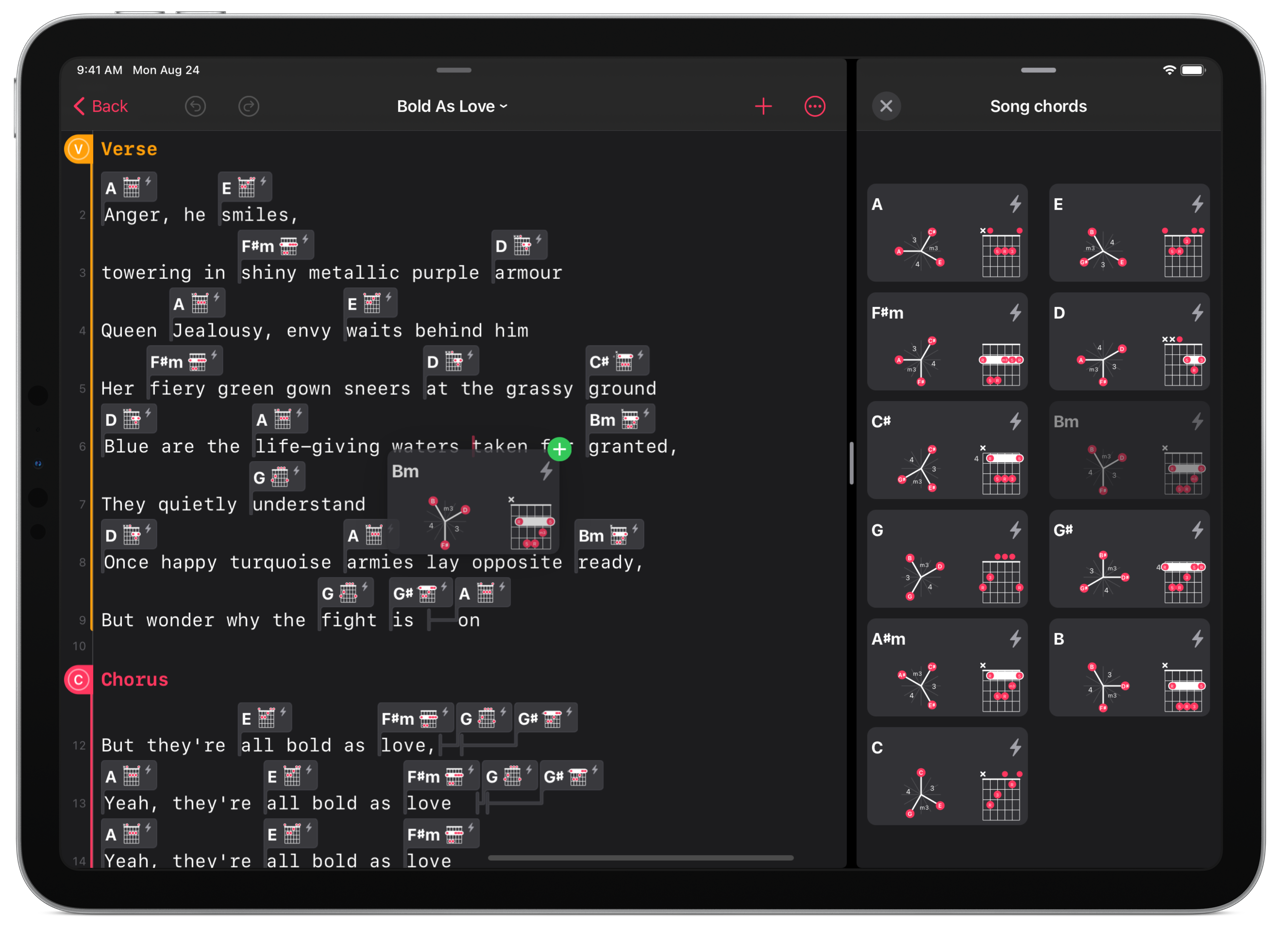
Dropping an annotation from a palette on the iPad
Annotations Collections or Palettes are sets of annotations (chords, voicings, tab bars) you can save, transpose, and reuse later.
A palette can be selected to provide annotations for the toolbar above the keyboard. On the iPad, you can also drag a palette to the side and use multitasking.
Dynamic Collections
The app has three special collections it can fill by itself: Basic: The set of major and minor triads for each note. Song: The set of annotations already present in the song Suggested: The app suggests some chords by harmonizing the scales generated by the Chord-Scale System. Some ML model is being developed to provide even better suggestions and will be released in a next update. These collections need a song and can’t be created ex-nihilo. You can however copy annotations from one of these dynamic collections to a custom collection.
Selecting a palette
When editing a song, tap the button at the top left of the toolbar above the keyboard to present the palette selection menu. If you tap a row, it will be automatically selected to fill the toolbar.
You can display dynamic palettes in fullscreen by tapping the
button.
The app also displays the current user palette. If this palette is selected, you can reverse the presentation order of annotations in the toolbar by tapping the
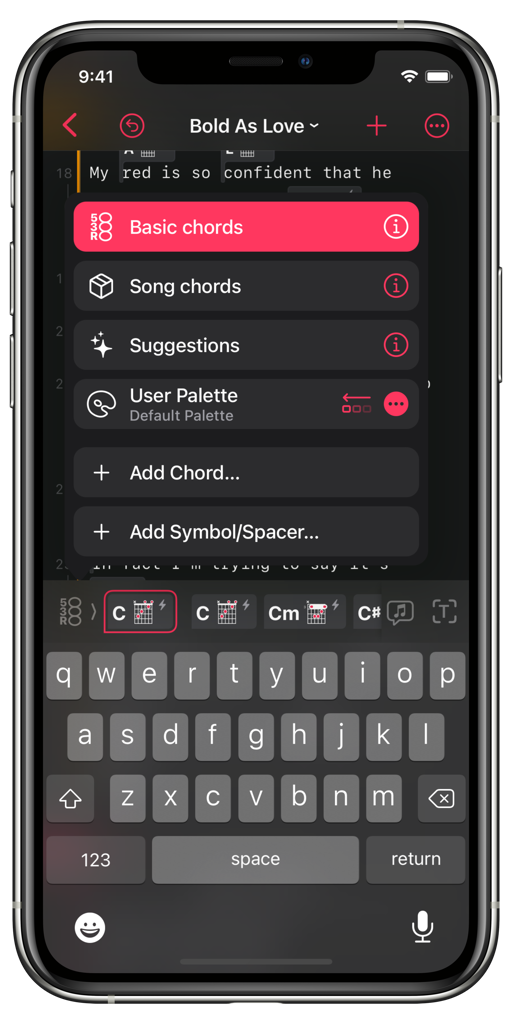
Selecting the active palette
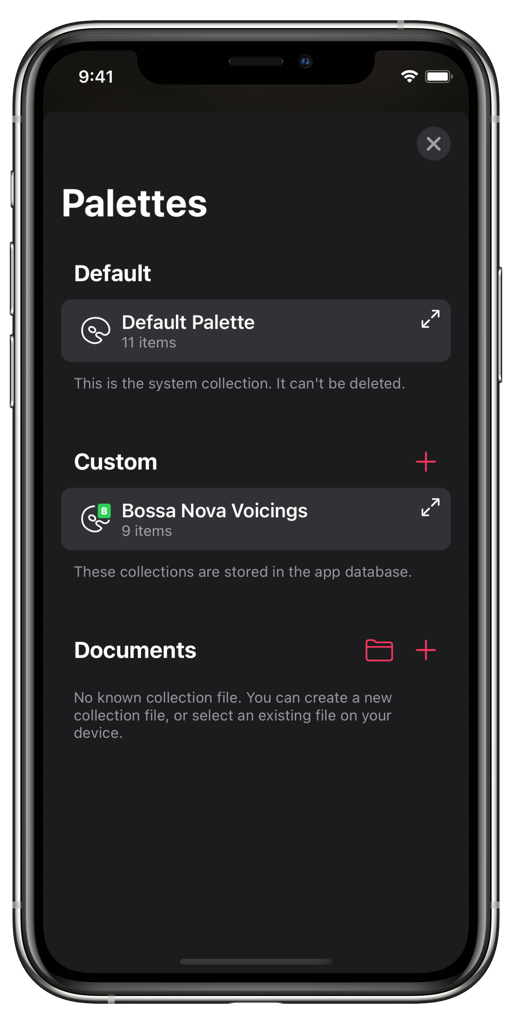
User Palettes
User palettes
One palette is special: the Default Palette. The content of this palette is fully editable, but it can’t be renamed nor deleted.
You can create as many additional palettes as you want. You can store them inside your database, or as files.
Each palette can have a name, a description, and a custom color. You can access more actions by long-pressing a palette entry. On the iPad, you can also drag the entry to the side of the screen to open the palette side-by-side with the song.
When you share a palette, the app generates a file that you can send to someone else, or store anywhere you want. These documents can be opened and used as it, without importing them into your database, or, to the contrary, migrated inside your database.
If you tap the icon of such a document in the File app or the home screen of SongKit, the app will open the collection using its intrinsic key, and display its content. See below how to link such a collection with a song being edited in this case.
Adding annotations to a palette
You can add annotations to a custom palette in several ways: You can paste any annotation or text containing annotations. In the last case, the app will keep only the annotations and automatically discard the text. You can drag and drop one or several annotations or text selections into the palette, from another palette or a song being edited. Furthermore, if the palette is currently selected to provide annotations for the toolbar above the keyboard, an “Add to palette” button will appear on the right side of this toolbar when staging a chord. This button will be enabled only if the current staged chord doesn’t belong to the collection yet, and tapping it will add the chord at the end of the collection.
Actions
What happens when you tap an annotation depends on the context and the visible views. On the iPhone and iPad, when you tap an element: If you’re displaying only the collection, it selects the tapped annotation If you’re editing a song, it stages the tapped annotation as the current annotation. On the iPad, while displaying the collection side by side and editing a song, it directly inserts the annotation as if you tapped an annotation in the toolbar above the keyboard.
You can also access more actions by long-pressing any item, like deleting it or copying it to the pasteboard.
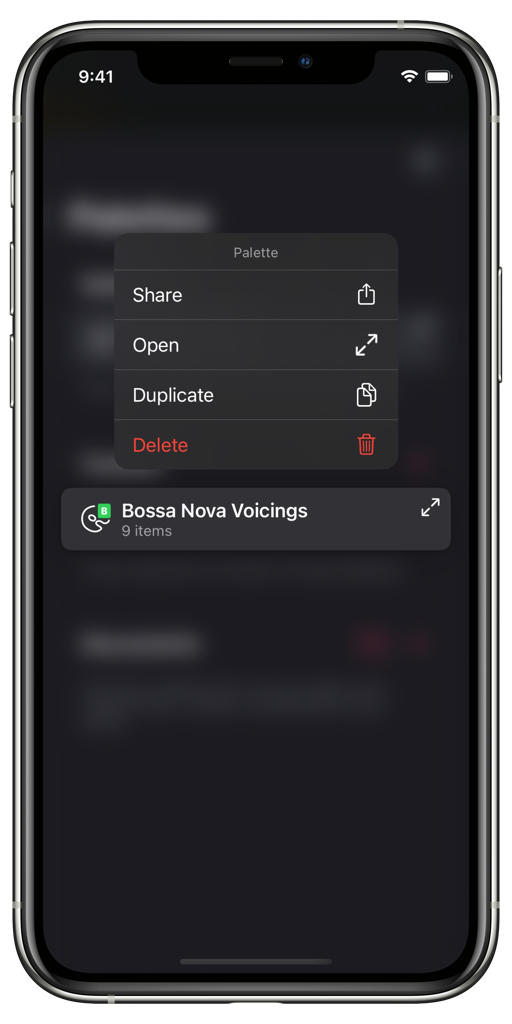
Long-pressing a collection presents more options
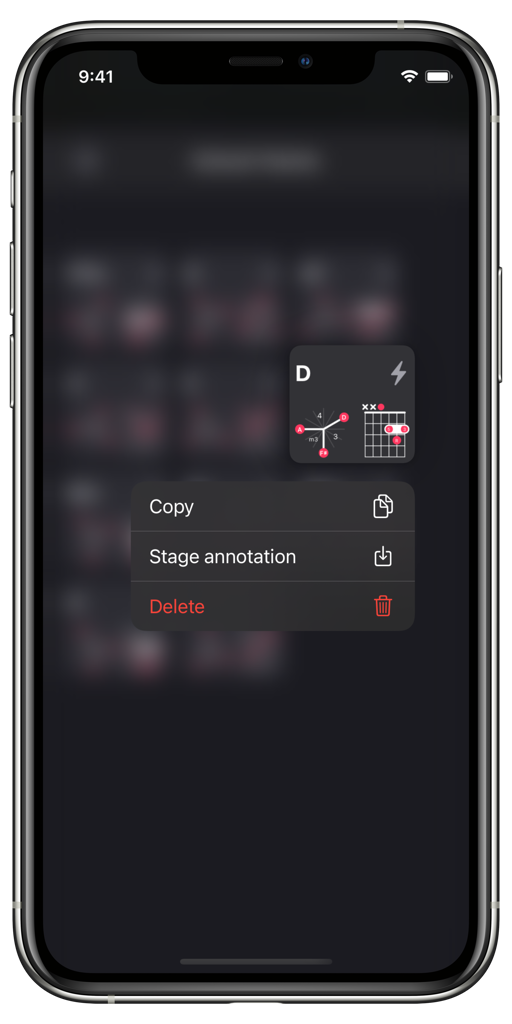
Long-pressing an item in a collection presents more options
You can also drag and drop items: Inside the palette to reorder it Into another area of the app to drop it. When using drag and drop, you can add more items to the items being dragged by simply tapping them.
Key and Linked state
Like songs, each collection has an intrinsic key. This key is used when you display the collection without any specific context.
If you open the collection while editing a song, the collection will automatically be transposed in the key of the song. If you transpose the song, the collection will follow. The collection is Linked with the song. When a palette is linked, the
For non-dynamic collections, you can also fix the key of the collection to some arbitrary key.
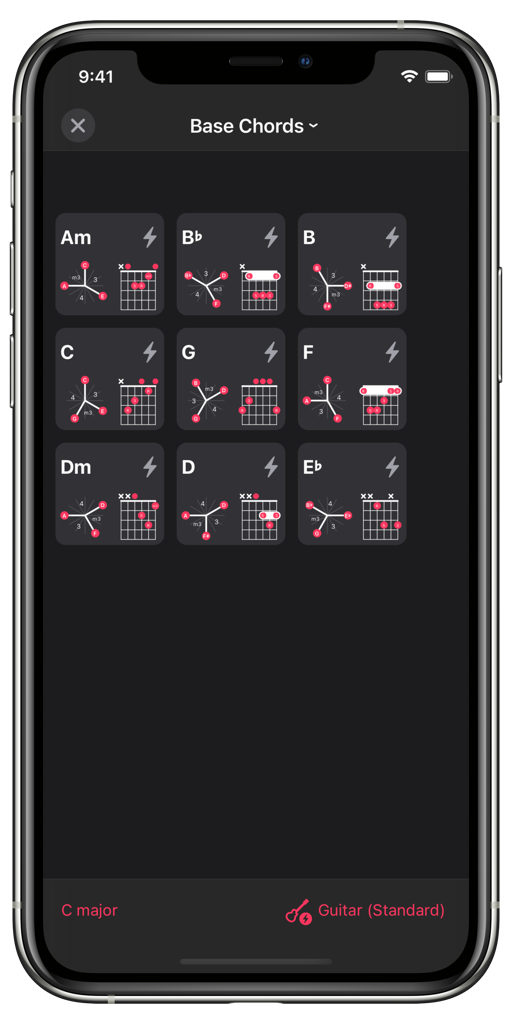
Some unlinked palette
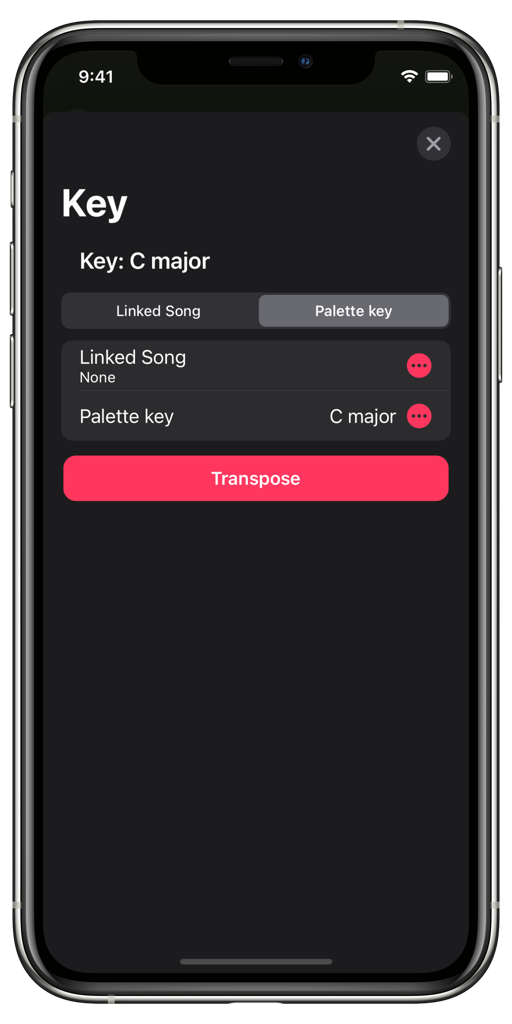
Selecting the key of a palette
On the iPad, you can have two or three instances of the app on the same screen, at the same time. Internally, each window lives its own life and has no knowledge of its neighbors.
If you drag aside a collection from a song, the collection will automatically be linked to that song and be displayed side-by-side with the song.
However, if you open a collection file from the File app or the home screen of SongKit and want the collection to follow your song’s state, you need to link the collection with the song. To do so, find the palette key at the bottom left of the screen and tap it. If there is no button, your palette is dynamic and its key can’t be adjusted.
The app then presents a key selection screen for the palette. Tap the